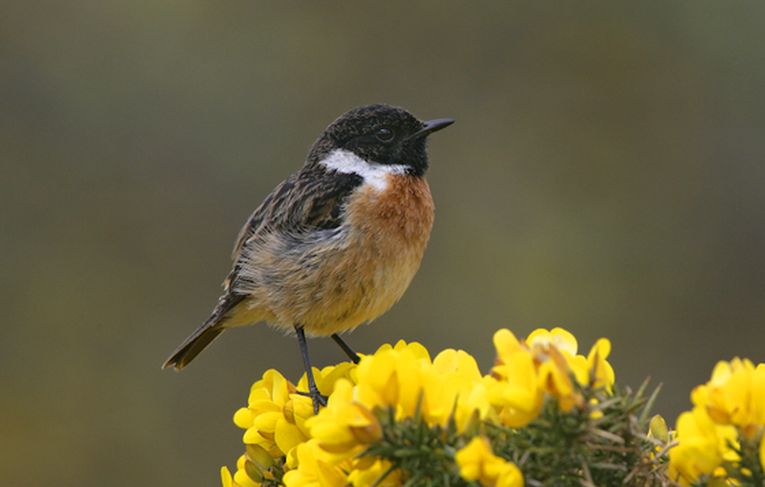Geographically, the stonechat Saxicola torquata (or rubicola) has a variety of sexually selected traits, such as its appearance and its song. There were significant differences found in Kim G Mortega, Heiner Fllinks and Barbara Helm’s study published in Frontiers in Zoology
as- Behavioural response of a migratory songbird to geographic variation in song and morphology. The 3 authors work at the Max Planck Institute for Ornithology in Radolfzell, Germany and the Universities of Konstanz and Glasgow.
These sexually-selected traits are important for evolutionary diversification. Males are chosen for their songs by receptive females but each species has a different relevance for the song. Acoustic and visual signalling differ geographically, leading to a behavioural barrier to breeding and hence speciation. Migratory birds have yet another factor thrown into the mix, although the songs can be acquired quickly. Hens, for example, may have to choose their mates more quickly than species which are residents. Song may therefore contribute to geographical variation more than inherited morphological traits.
This study involved playback of songs to both sexes, also using decoys. Local stimuli of appropriate decoys and songs produced stronger responses for males and females, but especially for the acoustic stimuli. Reproductive isolation does seem a likely end-result for such geographical mating barriers, although the results indicate a cline whereby the 2 extremes would tend not to mate, but intermediates could recognise the sounds as mating calls and respond at least partly.
Vocal learning is the key to this research, as the natal region provides the mix of song types that would be acceptable to a mate. Imperfect copying could be the reason for local variations, just as in any language. So we can talk of song dialects. The experimentation involved is by studying copulation and solicitation displays after standardised playback. The offspring from a mating between local birds would be better equipped to deal with local ecologies. One of the most interesting experiments was to try out the closely related African stonechat, which has the same Latin name at the moment. The male response was dramatic, as they obviously had fine discrimination between attractive local competitors and those from further away.
The answer for a lost individual after mating would be to learn a new song or how to react to novel stimuli such as the song in the case of females. Nightingales have been shown to learn new songs in their first season, (see our old The Nightingale Sings
story on Sarah Kiefer’s paper), so the migratory problem seem to be overcome in some cases. Local stonechat males of course might have something to say
about these interlopers! The point is that colour and other morphological characters also aid in discrimination, so it’s not the song, it’s the singer.










